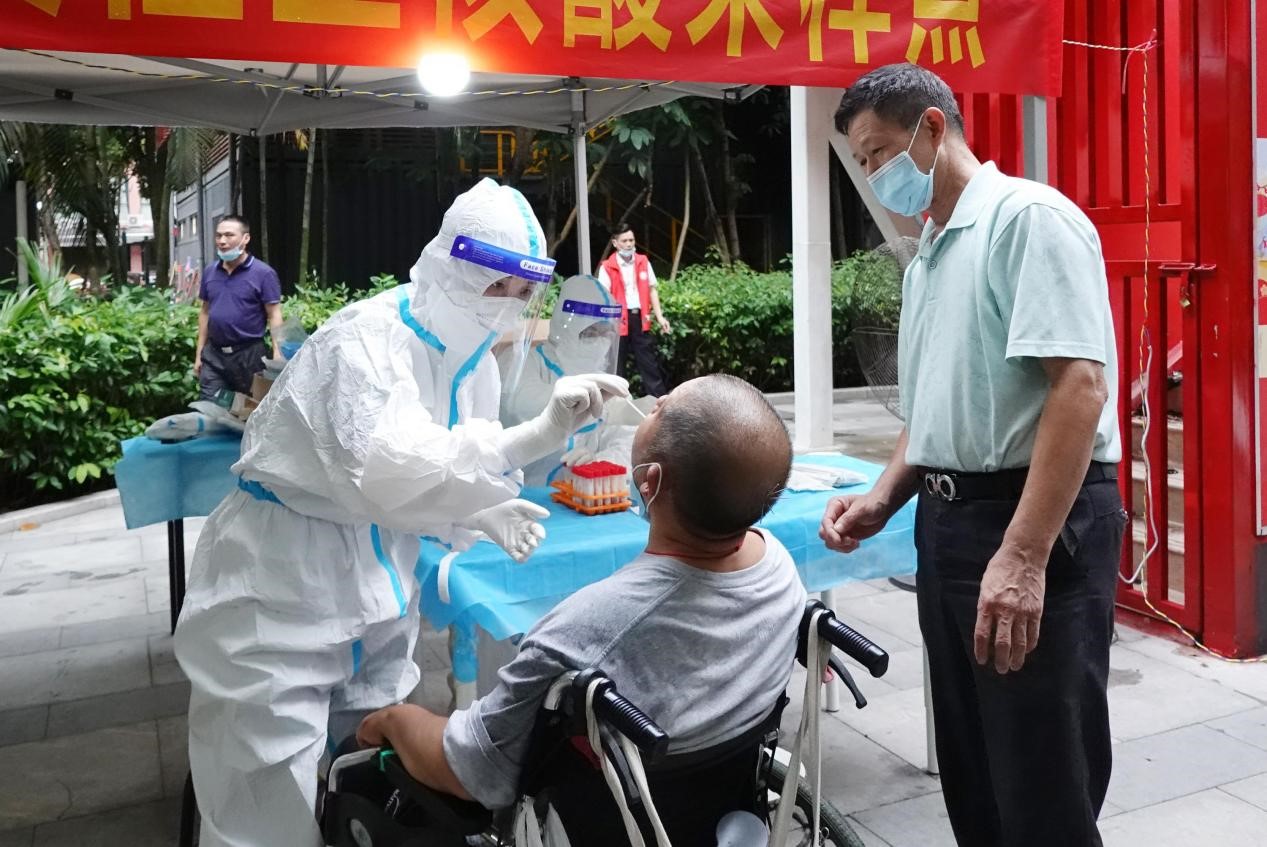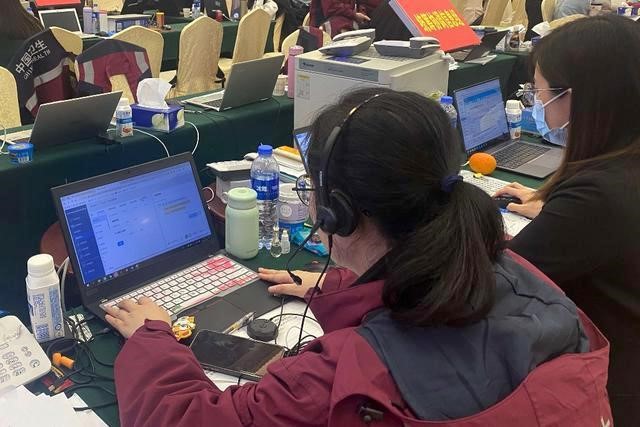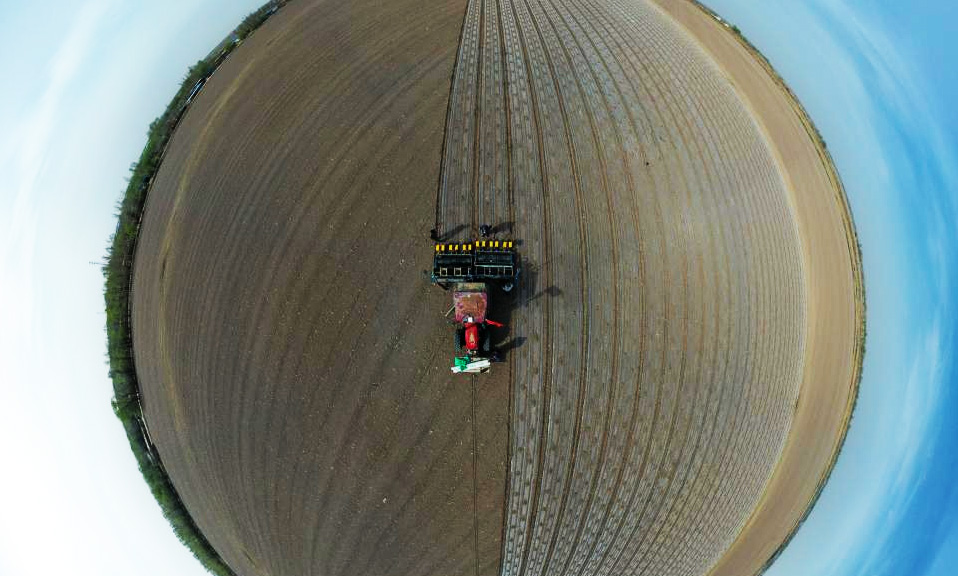AI facilitates implementation of dynamic zero-COVID policy in Shenzhen
Since the outbreak of the COVID-19 pandemic, cloud computing, big data, artificial intelligence (AI) and other technologies have been widely applied in Shenzhen, south China’s Guangdong province, helping improve the efficiency of Shenzhen’s response to public health emergencies and inter-department collaboration capabilities of the city during its implementation of the dynamic zero-COVID policy.

People take part in a citywide nucleic acid testing in Haibin community, Futian subdistrict, Futian district, Shenzhen city, south China’s Guangdong province, June 8, 2021. (Photo by Hu Zhihui/People’s Daily Online)
To ensure efficient epidemiological investigation, contact tracing, and prompt action for the virus prevention and control, Shenzhen Center for Disease Control and Prevention (Shenzhen CDC), together with China’s tech giant Tencent, developed and implemented a digital system for epidemiological investigation.
Information collection in epidemiological investigation is considered the most time-consuming and arduous task in the containment of the spread of the pandemic.
During the process, epidemiological investigators often need to hold a phone in one hand to ask individuals who are at risk of infection and close contacts of COVID patients about their information, and write down the information with a pen in the other hand. Each investigator is responsible for entering a vast volume of handwritten data into electronic documents on a daily basis.
It happens a lot when the objects of epidemiological investigation hang up the phone or simply don’t answer phone calls from an unknown number; more often than not, investigators need to call the same person over and over again.
The digital system, which integrates AI technologies including Voice over Internet Protocol (VoIP), speech recognition and natural language processing (NLP), enables epidemiological investigators to speak with the callees via computer and headset. This eliminates the need for them to hold the phone throughout the discussion and allows for easier recording of the information, ensuring an efficient flow of information and aiding in the city's epidemic response.
To assure citizens of the credibility of the calls for epidemiological investigation, the system has labeled their caller ID as Shenzhen CDC and sends a message to citizens to encourage them to answer the phone for epidemiological investigation.
Besides, the system can automatically process the information collected during the epidemiological investigation, saving investigators a huge amount of time they would have spent on reorganizing the handwritten information.
With the adoption of AI technologies, the system can automatically generate text based on the telephone conversations, and intelligently identify and extract core information and automatically fill it in the investigation form.
For example, if the person under epidemiological investigation says that he/she has taken Shenzhen Metro Line 5, the system will automatically display all the stations along the metro line. All the investigator needs to do is to check the boxes of relevant stations the person mentioned, and the information will be automatically filled in the investigation form.
After the conversation is over, the system will, based on a standard template, automatically export a table about the investigated person’s core information, a list of the key places he/she has been to, his/her close and indirect contacts and a preliminary epidemiological investigation report, buying more time for the follow-up management of key places and groups of people involved.

Epidemiological investigators in Shenzhen, south China’s Guangdong province, make Voice over Internet Protocol (VoIP) calls for information collection. (Photo/Shenzhen Center for Disease Control and Prevention)
The digitalized information collection process has greatly improved the efficiency of epidemiological investigation.
The digital system includes a webwork platform on the PC terminal and a mobile app. After epidemiological investigators identify the places and people that have been exposed to infection through phone calls, on-site responses will immediately be set in motion.
On-site epidemiological investigators, who can track their tasks in real-time via the mobile app of the digital system, arrive at relevant places immediately for confirmation of the places’ risks, hygiene and people investigation, close contact screening, etc.
At the same time, the sampling team comes to collect samples at these places to see whether the virus exists on human bodies, objects, and the environment after receiving their assignments at the mobile app, while the terminal disinfection team completes its disinfection tasks in every relevant link in a timely manner according to the location and time designated by the system.
Through multi-party collaboration on-site and real-time cooperation between investigators working on the PC and mobile terminals, the system guarantees a prompt response to the epidemic.
All of the information collected on-site is uploaded and reported via the mobile app, making it instantly available to epidemiological investigators working on the PC terminal, who can quickly make a judgment about the situation, provide guidance and add new information.
While addressing pain points including delays in offline information transmission, low inefficient integration of fragmented information, and errors and omissions in information delivery, the system provides a smooth information-based workflow for epidemiological investigation and makes possible broader, deeper, faster and closed-loop investigation work.
Photos
 Young artist takes up brush to create lifelike paintings expressing mankind and nature’s harmonious co-existence
Young artist takes up brush to create lifelike paintings expressing mankind and nature’s harmonious co-existence Cutton farming in full swing in China's Xinjiang
Cutton farming in full swing in China's Xinjiang Spring scenery along section of Grand Canal in Beijing
Spring scenery along section of Grand Canal in Beijing New faces called up for Chinese national women's volleyball team while Zhu Ting missing
New faces called up for Chinese national women's volleyball team while Zhu Ting missing
Related Stories
Copyright © 2022 People's Daily Online. All Rights Reserved.






